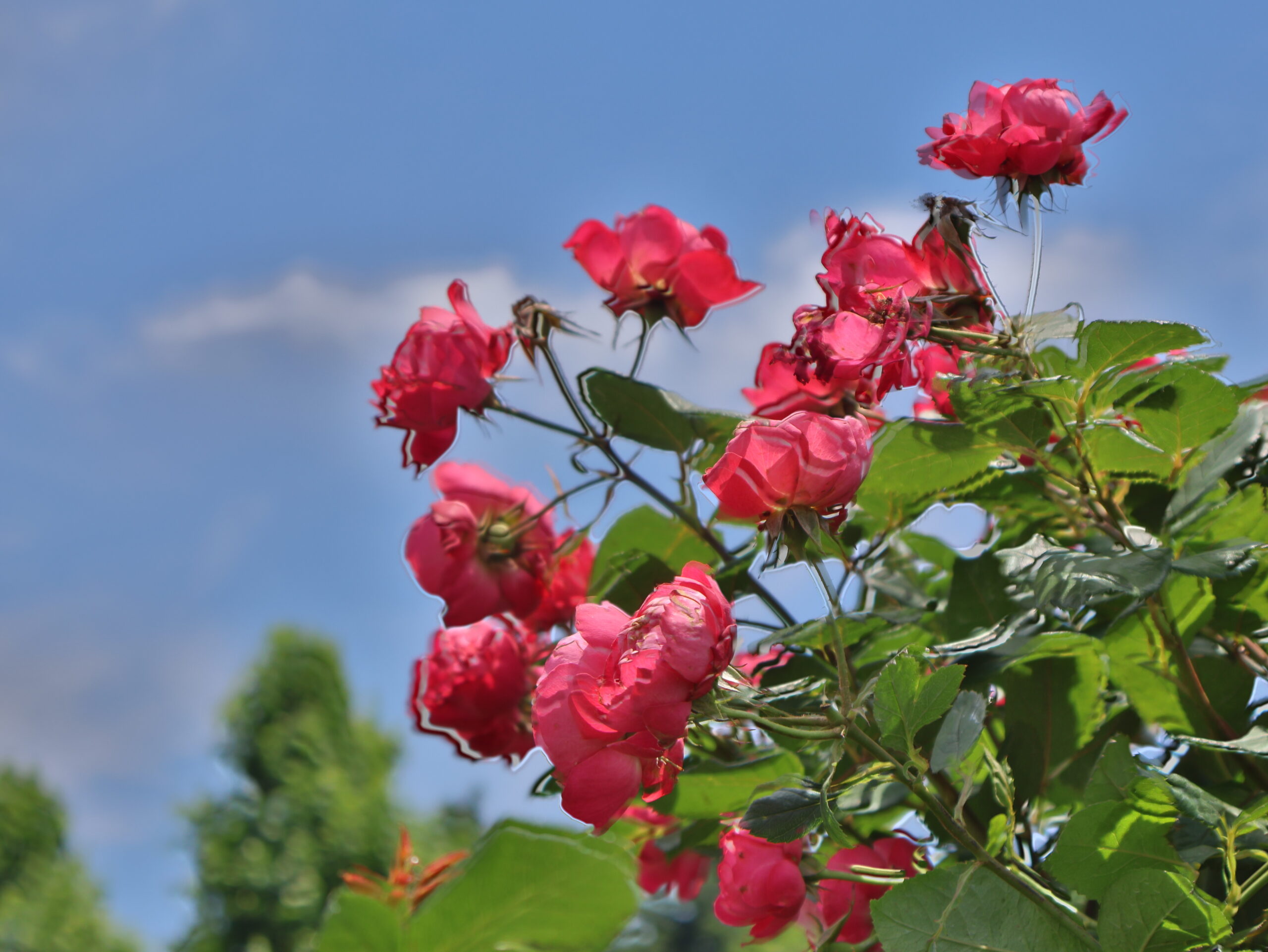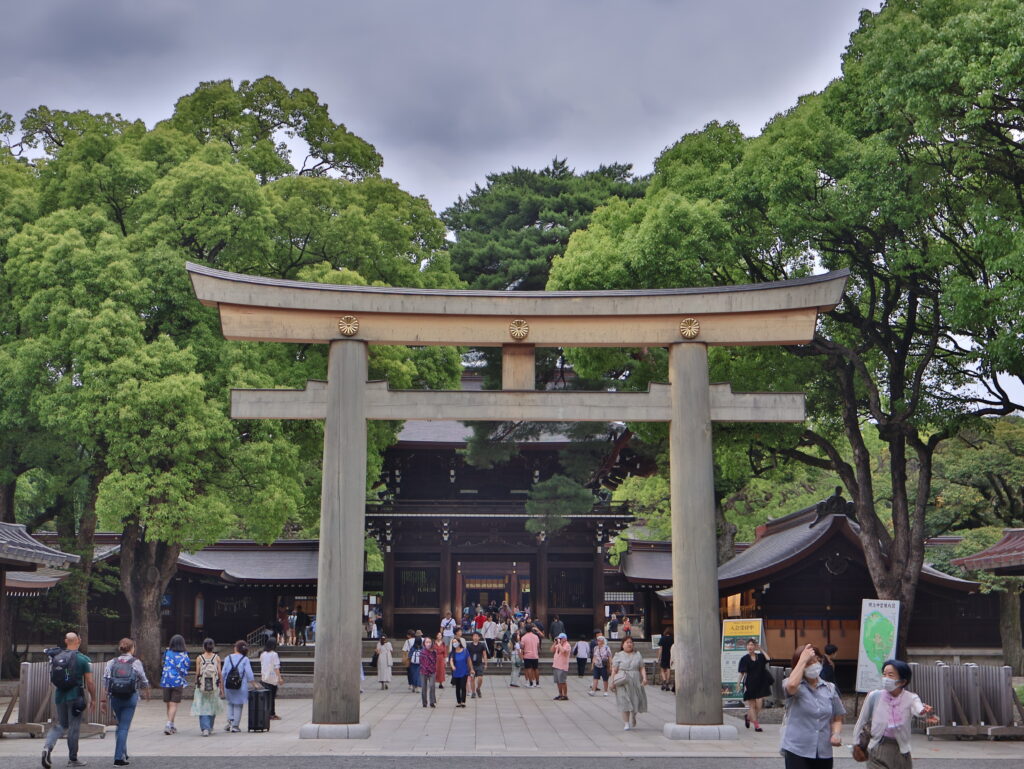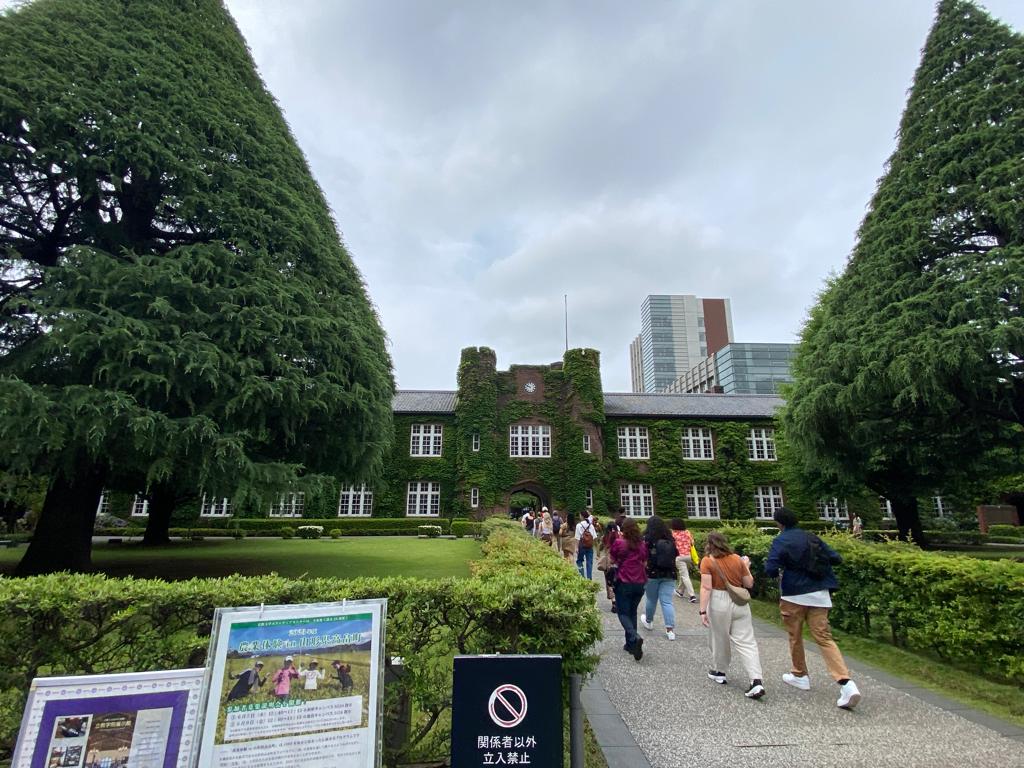
There are several roses with a blue sky in the background.
Along with its stunning architecture, elaborate subway systems, and beautiful historic sites, visitors to Japan are bound to experience breaks in the mold of the city.
One of the most notable—and definitely the prettiest—of these changes of pace are the immense green spaces in the city. Inside one of the busiest cities in the world, surrounded by technology reminiscent of New York, there lie several hundred acres of nature.
The greater Tokyo area is home to almost 40 million people. The city is a maze of twisting streets and towering skyscrapers; however, one of the most renowned features of the city is the Shinjuku Gyoen National Garden.

These gardens offer any guest an escape into a lush, vibrant environment. There are several large areas inside the park with distinct functions and aesthetics. There are classical Japanese-style gardens, formal gardens, and an incredibly impressive greenhouse. The greenhouse has a large area to walk through on an unguided tour, with waterfalls and caverns to explore. The building also has dedicated resources for preserving some species of plants. This site is a frequent spot for field trips and family outings as well, with large open spaces that make for perfect picnic spots. However, it isn’t quite as recognizable as the Meiji Jingu Shrine.
The Meiji Jingu Shrine is surrounded by a massive forest on almost all sides. One hundred and forty-four acres of dense trees isolate the site from the industrialization of the rest of the city. The shrine sits just outside a train station and is within walking distance from Takeshita Street, a massive shopping district.
Inside the shrine grounds, however, it feels like an entirely different world. The dense forest isolates visitors from anything that could even be described as modern. As visitors walk through, they may be captivated not only by the beauty of the shrine but also by the sheer size and density of the forest.
The most impressive thing about this, however, is that the forest is artificial, in a sense. In 1920, almost 110,000 volunteers offered their time to help create a new forest to honor Emperor Meiji and Empress Shokan. The trees were selected based on how they would look far into the future, and there are 234 different varieties of trees.

Over a hundred years later, the forest has continued to grow and flourish, but other than protecting it, there has been as little intervention as possible. The official website for the shrine states that “Nothing is added or taken away, and the plants must sustain themselves.” The staff that watch over the shrine give the property the respect and attention it deserves, but leaving the forest to itself is an excellent way of bolstering the local ecosystem and creating an authentic, gorgeous landscape.
While the Meiji Jingu Shrine decidedly removes itself from the modern world with its nature, places like the prestigious Rikkyo University prefer to blend their architecture with nature.

In Rikkyo’s main courtyard, there are two enormous trees that are meticulously maintained, a source of pride for the students. Just past those iconic cedars lies the main building of the campus, which is absolutely covered in ivy. Rikkyo’s campus incorporates vertical gardening, with the walls covered in vibrant shades of green. Nearly every inch of the building is covered in three kinds of ivy. This approach makes the colors of the building pop, as opposed to creating a solid green mass.
Japan’s dedication to preserving these green areas, despite its intense industrial and urban focus, is truly admirable and is a prime example of how to incorporate more nature into daily life.





